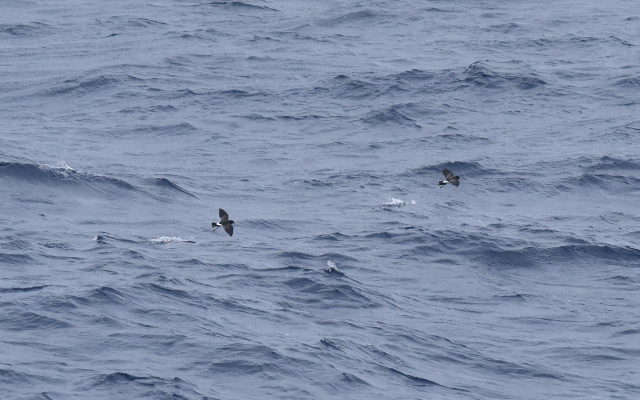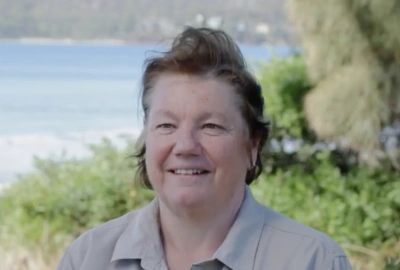Storm petrel power
They live out at sea and then they breed on islands. Tasmania does have the white-faced storm petrel that breeds in very icy, isolated areas.
That's one of four or five storm petrels that live out there and they seem to love it - the windier the better.
Albatrosses and gannets and other birds will actually sit on the water. I've never actually seen a storm petrol sit - I don't know what they how they rest.
They're not actually fishing for fish. They're picking up little extra bits of spare food on the surface.
Some birds, especially migratory shorebirds for example, they can sort of shut off half the brain, keep flying with half and rest the other half.

Different sea birds have different strategies. Albatross can't dive, so they're taking food that is on the surface or just underneath. Gannets, they'll dive a long way. Penguins, they'll swim underwater. So everybody has a way of making it work, and that's pretty impressive too.
The first time at sea that I saw a blue petrel, which is a tiny seabird, I'd been doing these trips for about seven years. Maybe 10 or 15 trips a year over seven years and I had not seen a blue petrel.
The blue petrel is little, a small grey and white seabird. It actually it looks like a fairy prion but then it just has this white bit on the tail. It suddenly dawns on you that it's not a fairy prion! My first blue petrel was a long time coming and very worth it.


Karen Dick
They live out at sea and then they breed on islands. Tasmania does have the white-faced storm petrel that breeds in very icy, isolated areas.
That's one of four or five storm petrels that live out there and they seem to love it - the windier the better.
Albatrosses and gannets and other birds will actually sit on the water. I've never actually seen a storm petrol sit - I don't know what they how they rest.
They're not actually fishing for fish. They're picking up little extra bits of spare food on the surface.
Some birds, especially migratory shorebirds for example, they can sort of shut off half the brain, keep flying with half and rest the other half.

Different sea birds have different strategies. Albatross can't dive, so they're taking food that is on the surface or just underneath. Gannets, they'll dive a long way. Penguins, they'll swim underwater. So everybody has a way of making it work, and that's pretty impressive too.
The first time at sea that I saw a blue petrel, which is a tiny seabird, I'd been doing these trips for about seven years. Maybe 10 or 15 trips a year over seven years and I had not seen a blue petrel.
The blue petrel is little, a small grey and white seabird. It actually it looks like a fairy prion but then it just has this white bit on the tail. It suddenly dawns on you that it's not a fairy prion! My first blue petrel was a long time coming and very worth it.

You might like...

Albatross: a life at sea

The amazing migration

Bruny Island Bird Festival

Tasmania: every day's a birding day
Newsletter
Sign up to keep in touch with articles, updates, events or news from Kuno, your platform for nature
